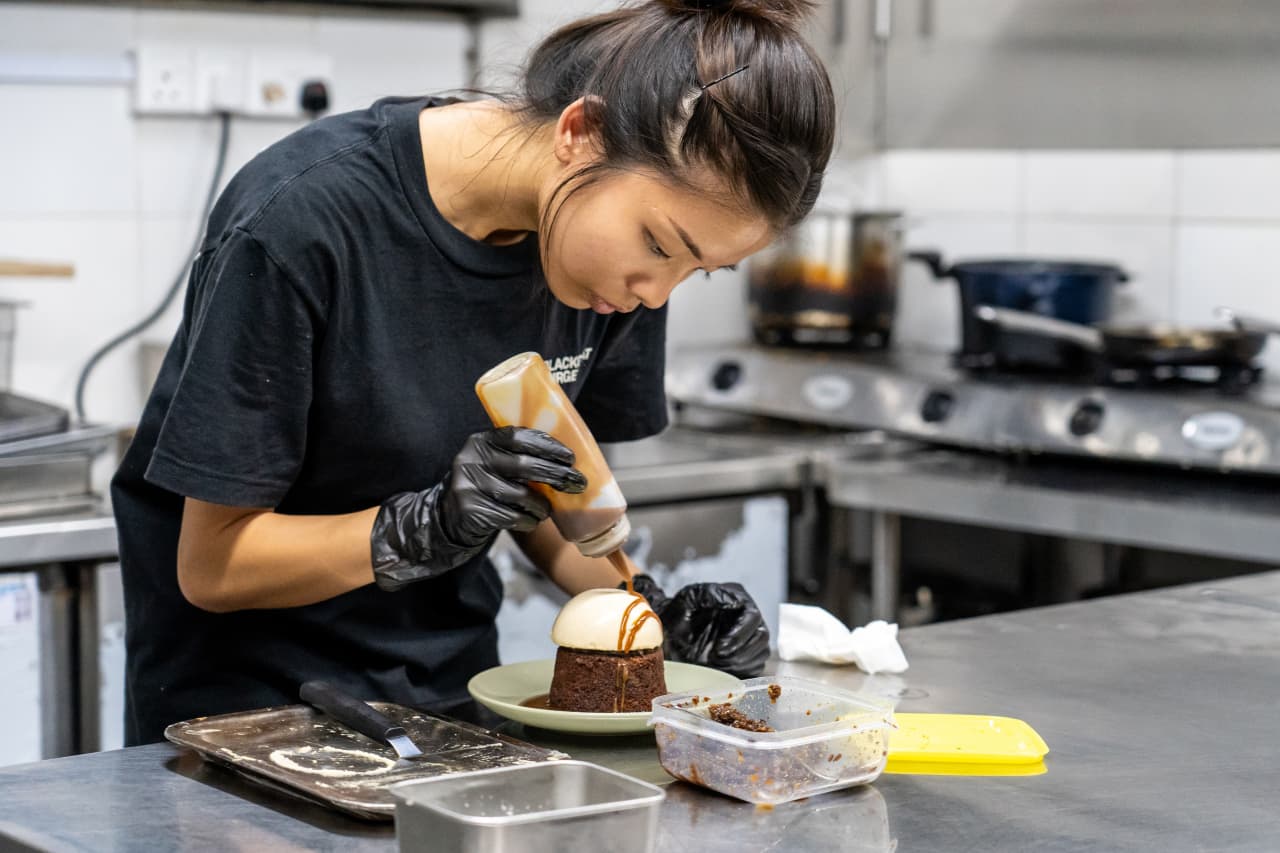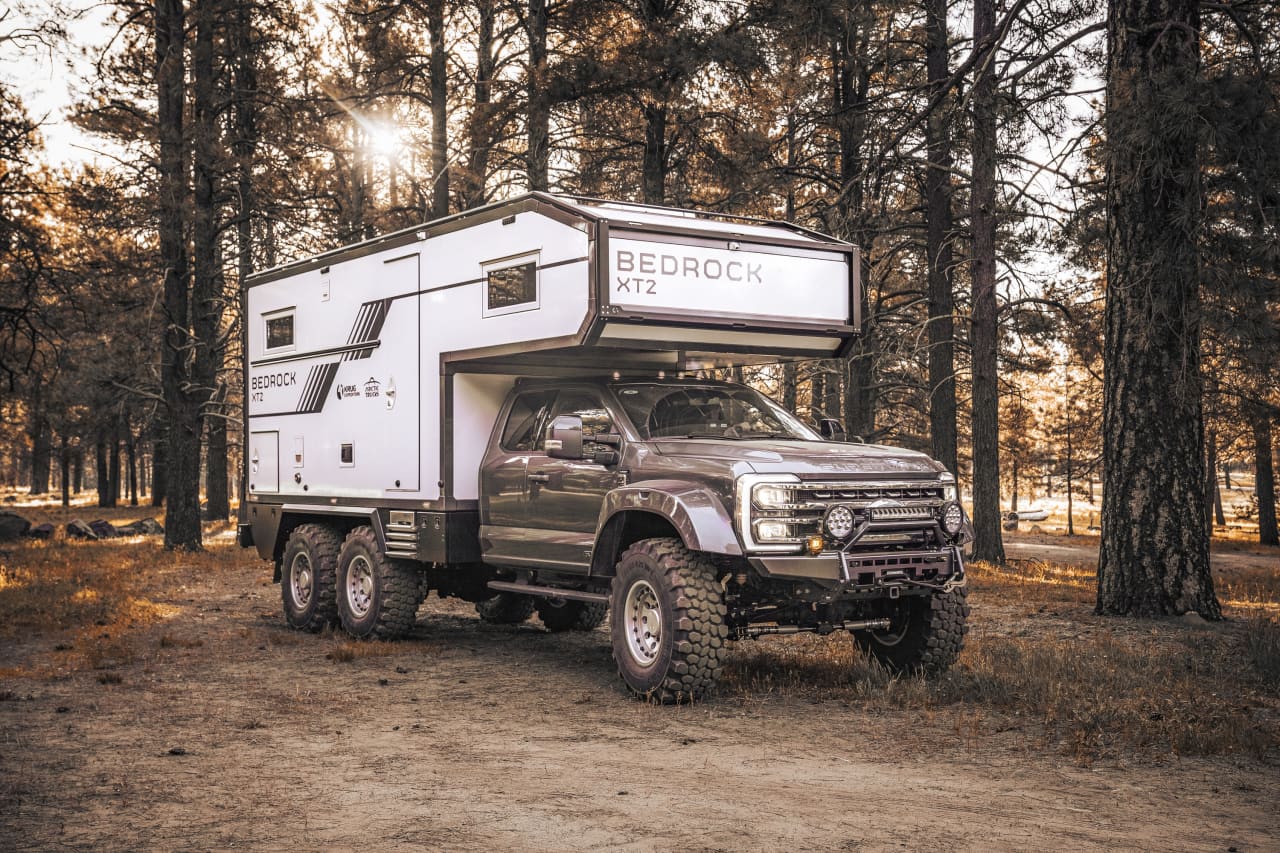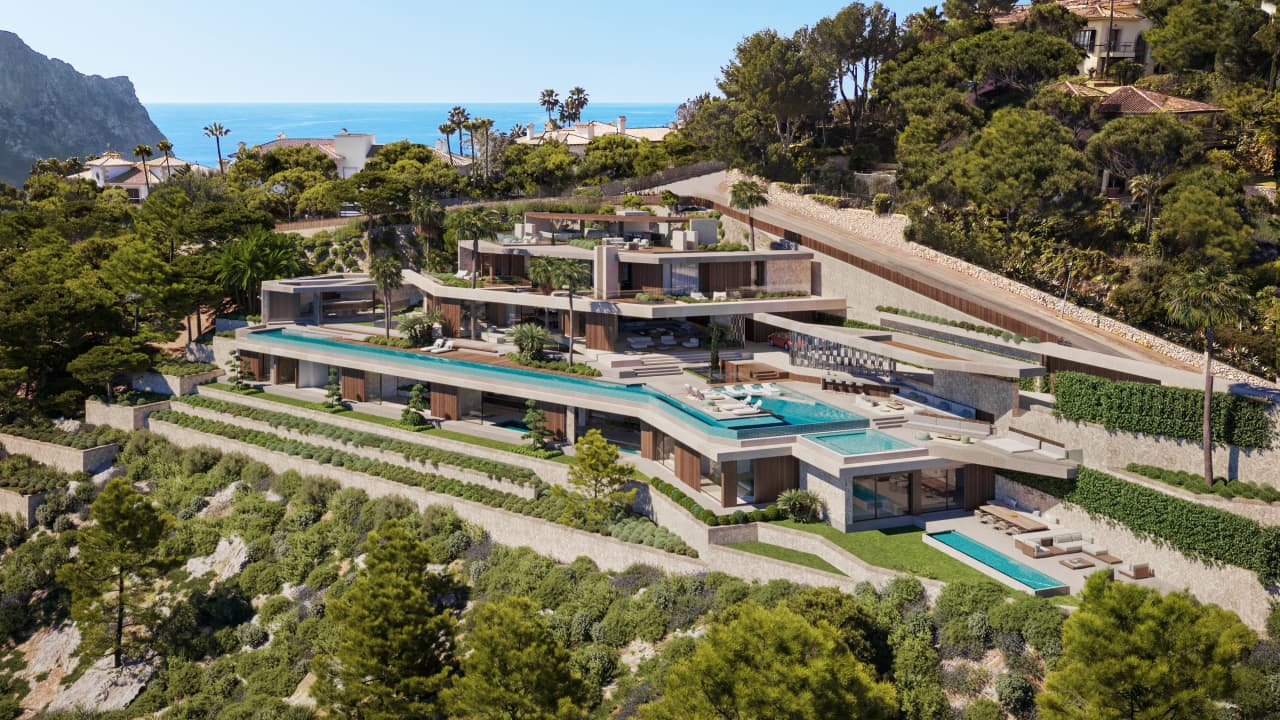Smart Saunas Are Picking Up Steam Around the U.S.
Ski-area homeowners in particular are installing high-tech versions that can be controlled by a smartphone app
Skiing and saunas go together for Colorado’s Brian and Tucker Humphrey.
The Boulder-based private-equity manager and his wife, a retired banker, first got into the sauna habit in 2017, when they joined her family in setting up a sauna-equipped ski property in the Rocky Mountain resort of Crested Butte. Later, when they built a primary home on a 3/4-acre lot back in Boulder, the couple included a larger, more upscale, high-tech sauna.
The two, working with Studio B, an architecture practice with offices in Boulder and Aspen, spent about $20,000 to create a glass-front sauna cabin. It had an app-ready heater from Finland’s Harvia and a digital control panel. Their architect, Mike Piché, placed the sauna cabin in a separate building, reachable from their new 7,000-square-foot home via a covered section of patio. The Humphreys moved into the finished home in late 2021.
“I like the clean look,” says Tucker Humphrey about the way the cabin fits in with the property’s Nordic feel. More important, she says the digital option is easier to use than the manual version she and her family have in Crested Butte.
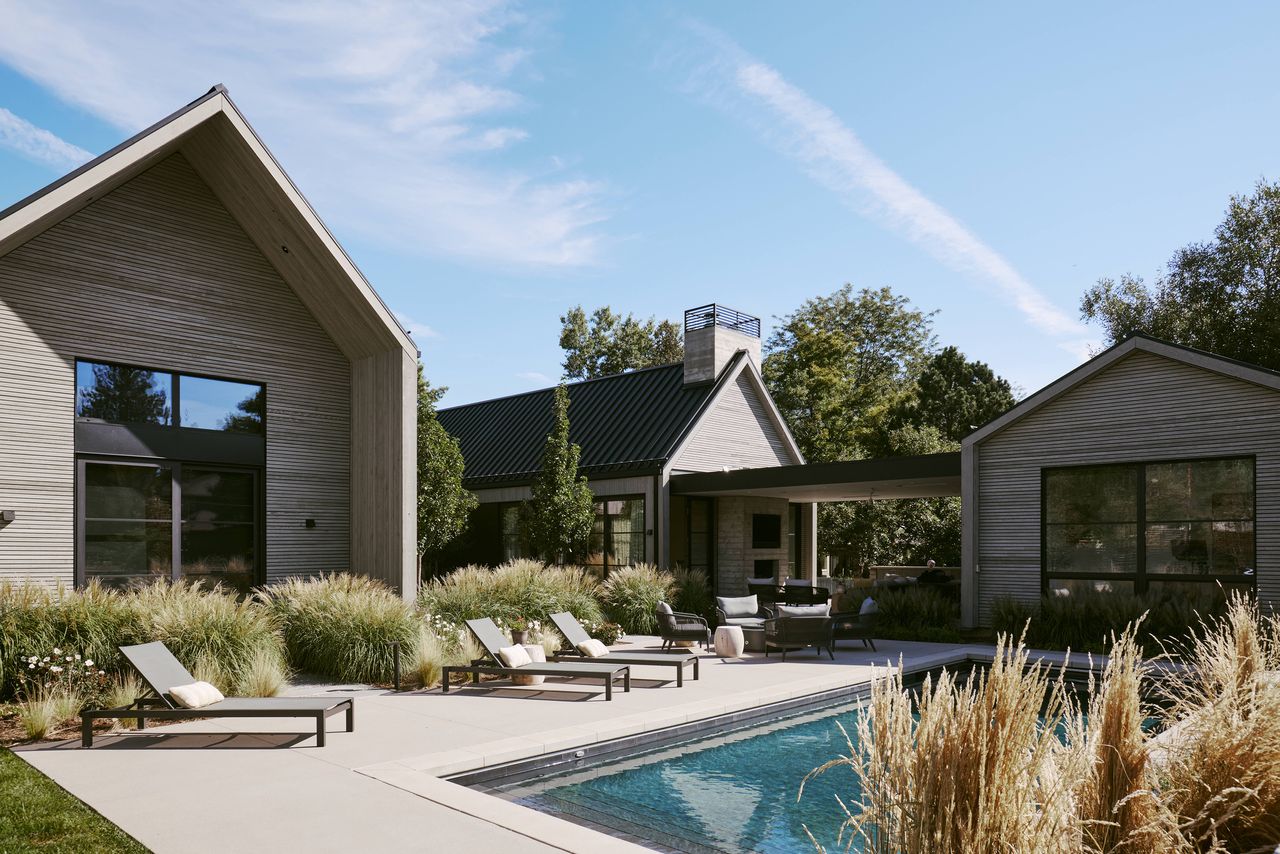
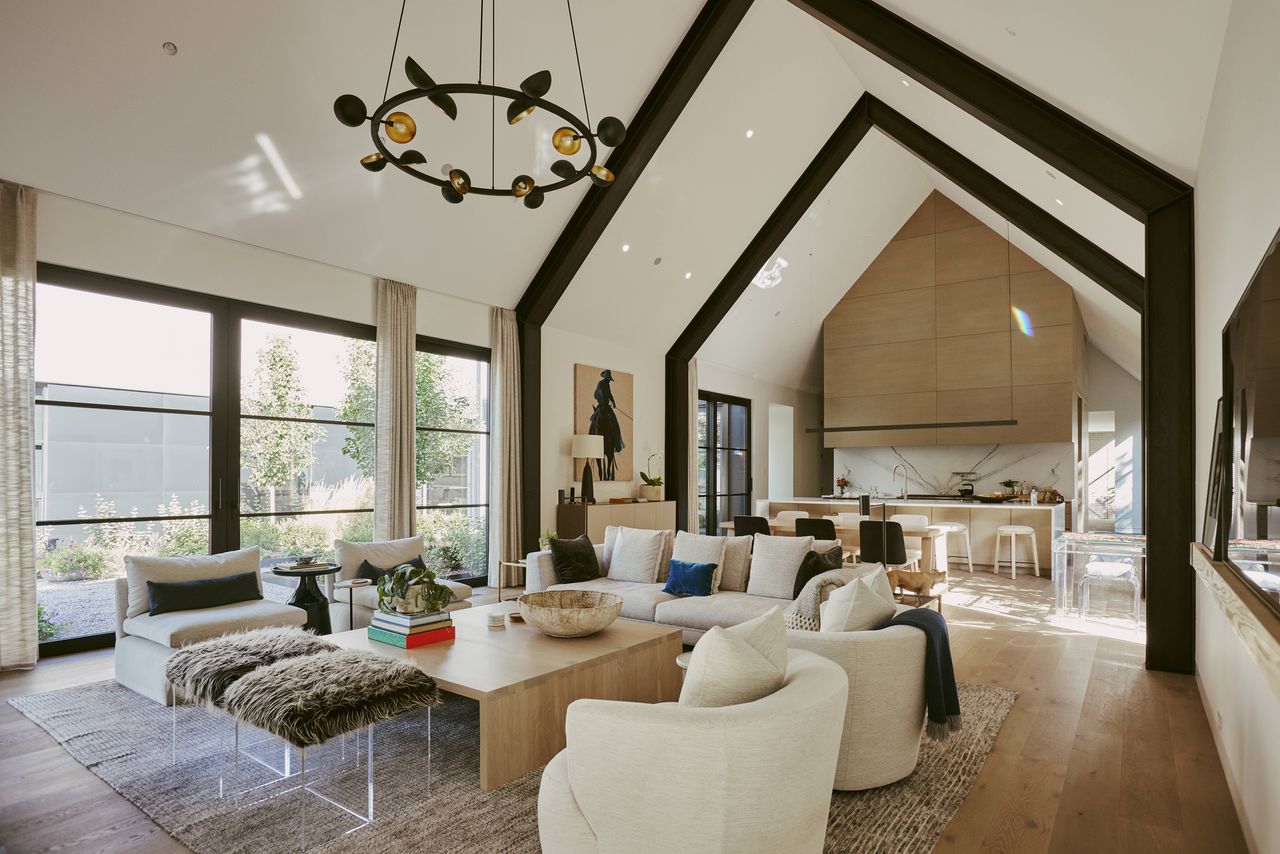
Until the past few years, home sauna heaters were little more than variations on mid-20th-century electrical appliances. Sauna enthusiasts used manual controls to turn them on, then had to wait around until the sauna was the correct temperature.
Today, smart controls offer users remote on-and-off options and precise temperature measures, and can even track usage over time. In the wake of such technological advances, the U.S. is emerging as the world’s breakout home-sauna market.
Estonia’s Huum, the sauna maker that pioneered smart-control heaters a decade ago, now counts the U.S. as its top-selling market. Finland’s Harvia, which helped launch the first modern home-sauna heater in the 1950s, also places the U.S. among its leading markets. It introduced its smart saunas in 2021.
Saunum, another breakout Estonian brand, began to distribute in the U.S. this year. Its digitally controlled sauna heaters offer the added advantage of more efficiently circulating heat to prevent cooler pockets of air from forming near the bottom of sauna cabins.
Don Genders, founder and CEO of Design for Leisure, a U.K.-based wellness company with a strong presence in the U.S., says home-sauna sales in the States reached $100 million in 2022 and are expected to grow as people focus more on their well-being.
Back in the sauna homelands of Finland and Estonia, smart controls are catching on in the cities, where users have indoor saunas. But vacation homeowners still tend to prefer wood-burning stoves in separate structures when in rustic settings.
In the U.S., smart controls are making saunas particularly popular in ski resorts and mountain communities, says Wes McMahon, owner of Idaho’s Sun Valley Saunas, a local retailer specialising in online sales to Mountain West clientele.
“When you’re driving home, you can turn your sauna on with an app on your phone,” he says. This ability, he adds, has done away with hours spent starting the heater and then waiting for the temperature to rise.
Makers are also reimagining the design of sauna heaters, which hadn’t changed much in decades. Instead of grill-top boxes with some rocks to radiate heat, homeowners can now opt for something sculptural, like Huum’s rock-filled, wire-basket heater called Drop, or something futuristic, like the zigzagging spider legs of the Structure heater from EOS, a Germany-based luxury sauna maker. Or they can just go for something fun, like Huum’s toylike, rock-tower heater called Cliff.
Retired tech executive Alan Saldich, 59, and his wife, Nancy Saldich, 61, a professional gardener, had aesthetics in mind when they added a free-standing sauna to their 5-acre Idaho vacation property in late 2022. The couple, who divide their time between the San Francisco Bay Area and Sun Valley, worked on the sauna cabin themselves, careful to make it blend in with their four-bedroom log house and metal-roof guesthouse. They were mindful of the look of the heater that would go inside.
Alan Saldich says he likes his sculptural wire basket filled with smooth irregular rocks, compared with the plain rectangles of the typical heater. He chose a Huum Hive Mini for $1,410 and included a digital-control feature at a cost of about $875. The add-on smart features were a no-brainer, he says. The couple can turn on their sauna while skiing and save time on the once-mandatory heating-up phase.
Unusual sauna-heater design is a signature of EOS. The company is now distributing in the U.S., following its acquisition in 2020 by the Harvia Group, which is seen as the worldwide powerhouse in saunas. EOS offers spiky, sculptural heaters that can cost more than $10,000. Rainer Kunz, EOS’s chief executive, says the company is planning to add voice-control options to its digital package.
Finland and Estonia trace their Baltic sauna traditions back thousands of years, but it wasn’t until the 1920s that the dry-heat ritual really caught on elsewhere, says Lassi A. Liikkanen, a Helsinki author and sauna consultant. Liikkanen says the breakthrough came when Finnish champion runner Paavo Nurmi credited his gold medals at three consecutive Olympics to his sauna habit.
Some still stick with tradition. Jay Verkler, 59, a Silicon Valley executive who started his career at Oracle in the 1980s, built a simple $7,700 sauna with his five sons in 2020 for their family’s Sierra Nevada vacation home. Verkler and his wife, Tamiko Verkler, 57, have plenty of gadgets, especially in their automated primary home near Palo Alto, Calif. For their sauna, they opted for a basic Harvia wood-burning stove. The couple also keep alive one East European tradition: donning old-fashioned peaked hats during saunas to keep their heads cool.
The standard sauna session entails splashing water on hot sauna stones to create waves of heat. Fifteen or 20 minutes of sitting in temperatures of around 180 degrees is then followed by a rapid cool-down. The whole process is often repeated several times.
During Sun Valley’s long ski season, the Saldiches prefer to cool off by lying in the snow drifts on their property. Down in Boulder, the Humphreys tend to jump into their new outdoor pool.
Wyoming’s Zane Aukee, 33, an attorney based near the Jackson Hole ski area, designed his own sauna cabin. It matches the rustic home he and his wife, Alexandra Eastman, who works remotely with an opera company, bought in 2018. He estimates he spent about $12,000 on his new sauna package.
The free-standing, cedar-clad cabin has a low-tech look, reminiscent of the saunas still popular at Finnish summer houses. But Aukee, who is of Finnish descent, is all in on controlling his heater, installed earlier this year, with his smartphone. “I’m not a huge tech guy,” says Aukee, who uses his sauna up to five times a week. “But I love this combination of technology and sauna culture.”
Budgets for a luxury sauna system can reach six figures. Effe, an Italian company that sells designer sauna systems, offers an app-controlled BodyLove collection–combining a sauna, a steam room and a shower—that starts at $100,000. CEO Marco Borghetti says America is now the brand’s second market after Italy.
Klafs, the German luxury wellness company, is readying its American clientele for a soon-to-be-launched, limited-edition sauna system designed by Studio F.A. Porsche, affiliated with the carmaker. The Klafs S11 sauna, with atmospheric sound and lighting elements, and featuring a Japanese-paper backdrop, is set to have a starting price of $120,000.
Elsewhere on the luxury front, Sarah Broughton, an Aspen-based architect with an upscale residential practice, says her clients are placing more saunas in primary bathrooms, instead of in separate wellness areas. Her clients typically spend $10 million dollars or more on their Aspen homes, and about $20,000 on their bathroom saunas.
In New York’s Catskill Mountains, Brooklyn architect Chad Murphy and his wife, healthcare executive Kristin Ohnstad, both in their 40s, decided to include $15,000 for a ground-floor sauna in a $500,000 gut renovation. The couple paid $140,000 in May 2020 for a 5-acre property in Sullivan County, two hours north of New York City, that came with a derelict 1,800-square-foot home. The sauna is connected to the home’s new gym.
The snowy conditions of the area led to the decision to add the sauna. Murphy designed it himself after consulting online sources. Parents of a newborn, the couple opted for a conventional electric sauna heater, but they make use of contemporary technology with a digital baby monitor, allowing them to take a sauna while keeping an eye on their sleeping child.
 Copyright 2020, Dow Jones & Company, Inc. All Rights Reserved Worldwide. LEARN MORE
Copyright 2020, Dow Jones & Company, Inc. All Rights Reserved Worldwide. LEARN MORE
This stylish family home combines a classic palette and finishes with a flexible floorplan
Just 55 minutes from Sydney, make this your creative getaway located in the majestic Hawkesbury region.
No trip to Singapore is complete without a meal (or 12) at its hawker centres, where stalls sell multicultural dishes from generations-old recipes. But rising costs and demographic change are threatening the beloved tradition.
In Singapore, it’s not unusual for total strangers to ask, “Have you eaten yet?” A greeting akin to “Good morning,” it invariably leads to follow-up questions. What did you eat? Where did you eat it? Was it good? Greeters reserve the right to judge your responses and offer advice, solicited or otherwise, on where you should eat next.
Locals will often joke that gastronomic opinions can make (and break) relationships and that eating is a national pastime. And why wouldn’t it be? In a nexus of colliding cultures—a place where Malays, Indians, Chinese and Europeans have brushed shoulders and shared meals for centuries—the mix of flavours coming out of kitchens in this country is enough to make you believe in world peace.
While Michelin stars spangle Singapore’s restaurant scene , to truly understand the city’s relationship with food, you have to venture to the hawker centres. A core aspect of daily life, hawker centres sprang up in numbers during the 1970s, built by authorities looking to sanitise and formalise the city’s street-food scene. Today, 121 government-run hawker centres feature food stalls that specialise in dishes from the country’s various ethnic groups. In one of the world’s most expensive cities, hawker dishes are shockingly cheap: A full meal can cost as little as $3.
Over the course of many visits to Singapore, I’ve fallen in love with these places—and with the scavenger hunts to find meals I’ll never forget: delicate bowls of laksa noodle soup, where brisk lashes of heat interrupt addictive swirls of umami; impossibly flaky roti prata dipped in curry; the beautiful simplicity of an immaculately roasted duck leg. In a futuristic and at times sterile city, hawker centres throw back to the past and offer a rare glimpse of something human in scale. To an outsider like me, sitting at a table amid the din of the lunch-hour rush can feel like glimpsing the city’s soul through all the concrete and glitz.
So I’ve been alarmed in recent years to hear about the supposed demise of hawker centres. Would-be hawkers have to bid for stalls from the government, and rents are climbing . An upwardly mobile generation doesn’t want to take over from their parents. On a recent trip to Singapore, I enlisted my brother, who lives there, and as we ate our way across the city, we searched for signs of life—and hopefully a peek into what the future holds.
At Amoy Street Food Centre, near the central business district, 32-year-old Kai Jin Thng has done the math. To turn a profit at his stall, Jin’s Noodle , he says, he has to churn out at least 150 $4 bowls of kolo mee , a Malaysian dish featuring savoury pork over a bed of springy noodles, in 120 minutes of lunch service. With his sister as sous-chef, he slings the bowls with frenetic focus.
Thng dropped out of school as a teenager to work in his father’s stall selling wonton mee , a staple noodle dish, and is quick to say no when I ask if he wants his daughter to take over the stall one day.
“The tradition is fading and I believe that in the next 10 or 15 years, it’s only going to get worse,” Thng said. “The new generation prefers to put on their tie and their white collar—nobody really wants to get their hands dirty.”
In 2020, the National Environment Agency , which oversees hawker centres, put the median age of hawkers at 60. When I did encounter younger people like Thng in the trade, I found they persevered out of stubbornness, a desire to innovate on a deep-seated tradition—or some combination of both.
Later that afternoon, looking for a momentary reprieve from Singapore’s crushing humidity, we ducked into Market Street Hawker Centre and bought juice made from fresh calamansi, a small citrus fruit.
Jamilah Beevi, 29, was working the shop with her father, who, at 64, has been a hawker since he was 12. “I originally stepped in out of filial duty,” she said. “But I find it to be really fulfilling work…I see it as a generational shop, so I don’t want to let that die.” When I asked her father when he’d retire, he confidently said he’d hang up his apron next year. “He’s been saying that for many years,” Beevi said, laughing.
More than one Singaporean told me that to truly appreciate what’s at stake in the hawker tradition’s threatened collapse, I’d need to leave the neighbourhoods where most tourists spend their time, and venture to the Heartland, the residential communities outside the central business district. There, hawker centres, often combined with markets, are strategically located near dense housing developments, where they cater to the 77% of Singaporeans who live in government-subsidised apartments.
We ate laksa from a stall at Ghim Moh Market and Food Centre, where families enjoyed their Sunday. At Redhill Food Centre, a similar chorus of chattering voices and clattering cutlery filled the space, as diners lined up for prawn noodles and chicken rice. Near our table, a couple hungrily unwrapped a package of durian, a coveted fruit banned from public transportation and some hotels for its strong aroma. It all seemed like business as usual.
Then we went to Blackgoat . Tucked in a corner of the Jalan Batu housing development, Blackgoat doesn’t look like an average hawker operation. An unusually large staff of six swirled around a stall where Fikri Amin Bin Rohaimi, 24, presided over a fiery grill and a seriously ambitious menu. A veteran of the three-Michelin-star Zén , Rohaimi started selling burgers from his apartment kitchen in 2019, before opening a hawker stall last year. We ordered everything on the menu and enjoyed a feast that would astound had it come out of a fully equipped restaurant kitchen; that it was all made in a 130-square-foot space seemed miraculous.
Mussels swam in a mushroom broth, spiked with Thai basil and chives. Huge, tender tiger prawns were grilled to perfection and smothered in toasted garlic and olive oil. Lamb was coated in a whisper of Sichuan peppercorns; Wagyu beef, in a homemade makrut-lime sauce. Then Ethel Yam, Blackgoat’s pastry chef prepared a date pudding with a mushroom semifreddo and a panna cotta drizzled in chamomile syrup. A group of elderly residents from the nearby towers watched, while sipping tiny glasses of Tiger beer.
Since opening his stall, Rohaimi told me, he’s seen his food referred to as “restaurant-level hawker food,” a categorisation he rejects, feeling it discounts what’s possible at a hawker centre. “If you eat hawker food, you know that it can often be much better than anything at a restaurant.”
He wants to open a restaurant eventually—or, leveraging his in-progress biomedical engineering degree, a food lab. But he sees the modern hawker centre not just as a steppingstone, but a place to experiment. “Because you only have to manage so many things, unlike at a restaurant, a hawker stall right now gives us a kind of limitlessness to try new things,” he said.
Using high-grade Australian beef and employing a whole staff, Rohaimi must charge more than typical hawker stalls, though his food, around $12 per 100 grams of steak, still costs far less than high-end restaurant fare. He’s found that people will pay for quality, he says, even if he first has to convince them to try the food.
At Yishun Park Hawker Centre (now temporarily closed for renovations), Nurl Asyraffie, 33, has encountered a similar dynamic since he started Kerabu by Arang , a stall specialising in “modern Malay food.” The day we came, he was selling ayam percik , a grilled chicken leg smothered in a bewitching turmeric-based marinade. As we ate, a hawker from another stall came over to inquire how much we’d paid. When we said around $10 a plate, she looked skeptical: “At least it’s a lot of food.”
Asyraffie, who opened the stall after a spell in private dining and at big-name restaurants in the region, says he’s used to dubious reactions. “I think the way you get people’s trust is you need to deliver,” he said. “Singapore is a melting pot; we’re used to trying new things, and we will pay for food we think is worth it.” He says a lot of the same older “uncles” who gawked at his prices, are now regulars. “New hawkers like me can fill a gap in the market, slightly higher than your chicken rice, but lower than a restaurant.”
But economics is only half the battle for a new generation of hawkers, says Seng Wun Song, a 64-year-old, semiretired economist who delves into the inner workings of Singapore’s food-and-beverage industry as a hobby. He thinks locals and tourists who come to hawker centers to look for “authentic” Singaporean food need to rethink what that amorphous catchall word really means. What people consider “heritage food,” he explains, is a mix of Malay, Chinese, Indian and European dishes that emerged from the country’s founding. “But Singapore is a trading hub where people come and go, and heritage moves and changes. Hawker food isn’t dying; it’s evolving so that it doesn’t die.”
This stylish family home combines a classic palette and finishes with a flexible floorplan
Just 55 minutes from Sydney, make this your creative getaway located in the majestic Hawkesbury region.
















